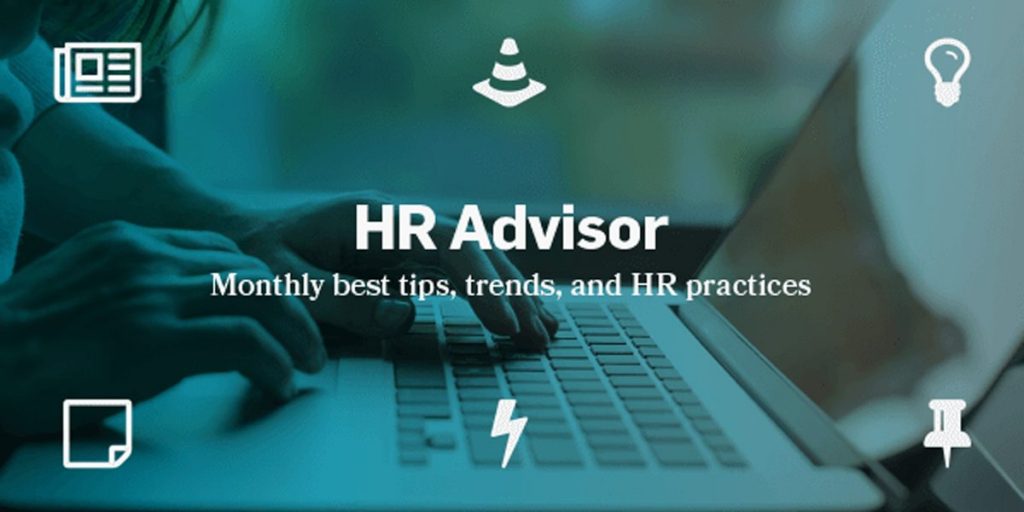Thank you for reading the HR Advisor Newsletter. Below you can read about the best ways to retain employees, the importance of having documentation to support a termination, and the benefits that plants can bring to your workplace.
Worried About Retention? The Best Way to Keep Employees Is to Be Useful to Them
According to Gallup, 51% of employees are looking for a new job, and 68% of employees believe they are overqualified for the job they have. Even engaged employees are job hunting at an alarming rate—37%. Employees who change jobs cite career growth opportunities, pay and benefits, management, company culture, and job fit as reasons for doing so.
Employees surveyed said they want to do what they do best while maintaining a good work-life balance. They desire a secure and stable job that pays well and contributes to their personal wellbeing. They’re likely to leave their current employer if they can get a more flexible work schedule or a significant pay increase elsewhere.
To retain employees—especially top performers—employers often look for perks they can offer to make employment with them more attractive and to keep good employees from leaving. We believe perks are nice, and they can encourage retention, but providing an assortment of distinguishing perks won’t keep employees long-term unless those perks meet essential employee needs.
The best way to retain employees is to remember why they became your employees to begin with—they have wants and needs, and employment with you enables them to meet those wants and needs. In other words, you’re useful to them (as they are to you). When your organization ceases to be useful or becomes less useful than another employer, employees might start looking for the next best (most useful) opportunity. The more useful you can be, the more inclined employees will be to stay with you. Fortunately, meeting your respective needs can be a solid basis for long-term collaboration and shared success. Here’s how:
- Talk to your employees about what knowledge, skills, and abilities they think would help them do their job better or make additional contributions to the organization. By involving employees in the discussions and decisions about what training they receive, you help them gain a sense of ownership over their work, their professional development, and their futures.
- Provide coaching and training opportunities that bring value to your organization and the professional development of your employees. Yes, training may make your workers more employable elsewhere, but it also prepares them for a better future working for you. You can increase the likelihood that your employees will use the training they receive for your benefit by giving them opportunities to put what they’ve learned to immediate use and rewarding them when the new skills and extra effort pay off. Prompt application of what they’ve learned will help solidify their knowledge, while the positive reinforcement will encourage continued use of the new skills.
- Involve employees in company initiatives that make use of their skills or teach them new ones. Not only will this help prevent their jobs from becoming too repetitive, they’ll gain valuable experience and form a connection to the organization that goes beyond their initial job duties.
- Make work meaningful and highlight the good that your organization does. This is especially important if the typical job duties of an employee feel mundane or uninspiring. If you’re paying someone to do a job, that job is essential to the mission of your organization. And that mission has value. Make sure employees know that their work, however repetitive or unexciting, matters. Take pride in the good you all do. Show your appreciation and gratitude. Recognize workers for a job well done. People want to feel appreciated, that they’re important, and that they’re involved in valuable work. You can help fulfill these wants.
- Encourage social interactions among workers. While money might be the primary reason people get jobs, it’s not the only reason. People tend to seek social connections and enjoy interacting with others. They like doing things with other people, and the workplace can be a great place to make friends, build community, and collaborate on a meaningful enterprise.
- Offer bonuses when your company meets its financial goals and when employees meet their individual and team goals. Bonuses motivate employees to be more engaged and productive by rewarding them with a tangible return on their investment.
- If feasible, offer raises to account for cost-of-living increases, job performance, and individual accomplishments. Like bonuses, raises encourage efficient and productive work by rewarding it. Of course, huge pay increases simply aren’t an option for many companies, especially small to medium-sized businesses. As much as these employers might want to pay higher salaries and wages, they don’t have the extra funds. If you’re unable to offer substantial raises or bonuses, the non-monetary rewards mentioned above become all the more useful and important.
There’s no guarantee that every hire will be the right fit and stay with your company as long as you’d like, but you can help improve retention—and cut down on its costs—by remaining useful to your employees. Your employees want to succeed in their professions as much as you do in your business. By aligning their individual success with your organizational success, you give them huge incentive to stay, improve their skills, and put those skills to good use in your organization.
Finally, if you’re not exactly sure how you can best be useful to your employees, ask them. Stay interviews are a proven way to learn and understand what your employees hope to get out of being employed with you. Check out the links below for more information and ideas.
Learn More
Stay Interviews – October 2017
How Conducting Exit Interviews Can Help You Increase Retention – September 2017
The Real Costs of Employee Turnover—And How to Measure Them – May 2017
Why Training Your Employees Is Good for Retention – February 2017
 HR Tip of the Month
HR Tip of the Month
The importance of documenting performance problems as they occur cannot be overstated. Although this requires meeting with the employee and discussing the issue, which will almost certainly be uncomfortable, it’s your best defense to a wrongful termination claim should the employee feel litigious after termination.
Too many employers rely on the concept of employment at-will to protect them, when the reach of this concept is actually quite limited. The problem is that if an employer has little to no documentation and relies on at-will employment—and the theory that legally no reason is required—the terminated employee, their attorney, and possibly a jury of their peers will fill the blank with an illegal reason. Although you may be within your rights to terminate “for no reason,” it’s a dangerous position to take.
But if the threat of litigation isn’t compelling enough, there are other reasons to deal with performance and behavioral issues promptly and with documentation. Addressing performance and behavioral issues as they arise will improve performance and behavior! There are a few basic principles working in your favor when you commit to the manta of “don’t delay, manage today.” Here are just a few:
- If they don’t know they’re doing something wrong, they can’t fix it. A huge number of employees don’t realize their performance or behavior is a problem—or that it’s as bad as it is—until they are being handed their pink slip. Talking to them about it will likely lead to you having a better employee and reduce hefty turnover costs.
- No one likes being in trouble. If you talk to an employee about an issue and they understand that failure to improve will result in another talking to, they are likely to shape up. If they are impervious to discipline, then addressing issues early and often will help you shepherd them out the door more quickly, so you can replace them with someone better.
- Documentation makes it real for the employee. It’s easy to brush off a quick, oral scolding time and again, but when employees know something is “going in the file,” they are likely to take it much more seriously.
- Other employees will catch on. If you are consistent in addressing performance and behavioral issues, your employees will know it. But consistency is key. If you only haul employees in sporadically for failing to meet expectations, you won’t reap the benefits of a culture of accountability.
Ultimately, talking to employees and making a paper trail will serve you both during employment, by encouraging better performance and reducing turnover costs, and after, should they threaten to sue. You can find dozens of resources on the HR Support Center by searching for discipline, performance, or coaching.
 Did You Know?
Did You Know?
Greenery in the office is good for putting green in the bank. Plants reduce pollutants, molds, and bacteria in the air, and numerous studies, at both U.S. universities and abroad, indicate that plant life in the office can increase productivity and creative problem solving by 12%-15%, improve recall, focus attention, and inhibit aggression. Properly selected and placed plants can also reduce cooling costs by as much as 20% and keep office humidity in the ideal range. Strategically placed plants also reduce office noise pollution. One study found that plants had a greater impact on employee happiness than windows!
Anchor Payroll
350 Clark Drive – Suite 310
Mt Olive, NJ 07828
Phone: 800-660-7089
Email: sales@anchorpays.com



